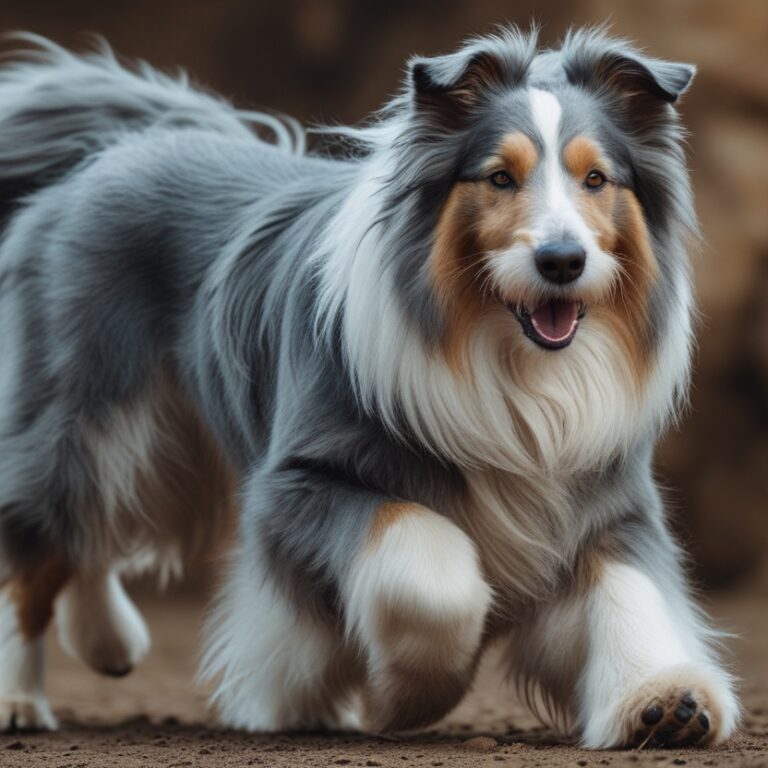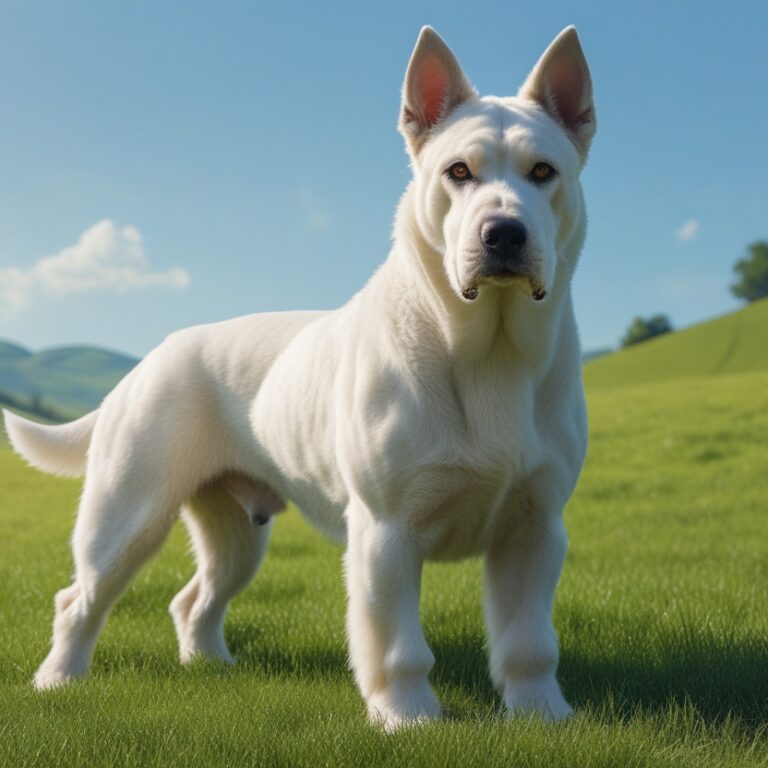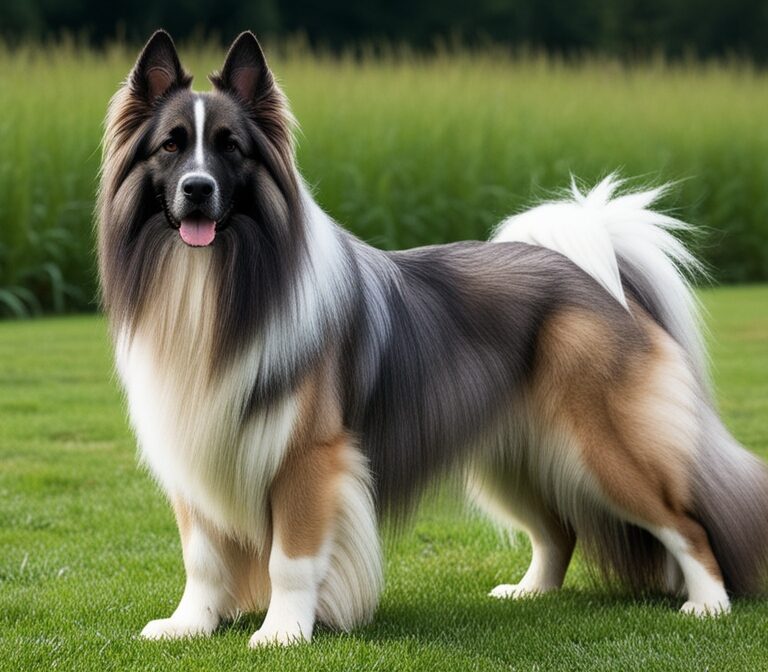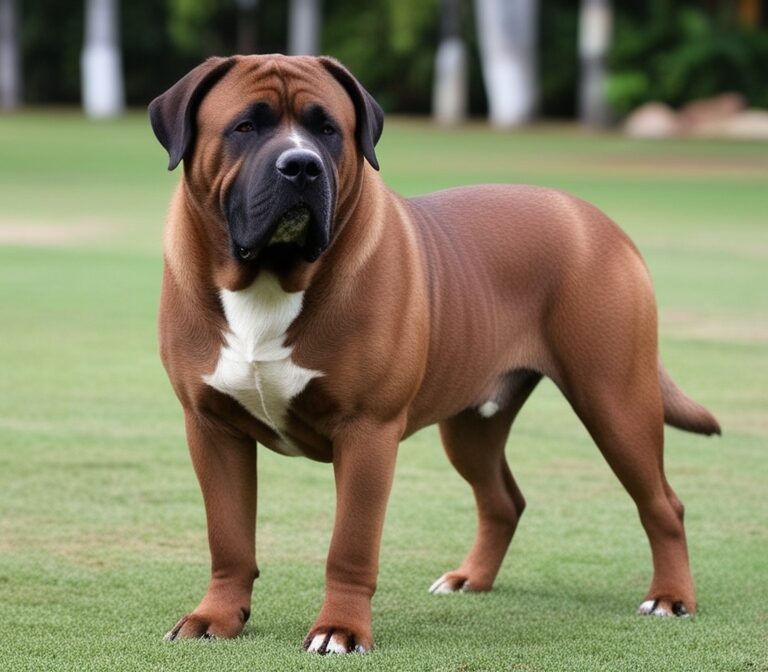Alentejo Mastiff (Rafeiro do Alentejo): Complete Breed Guide
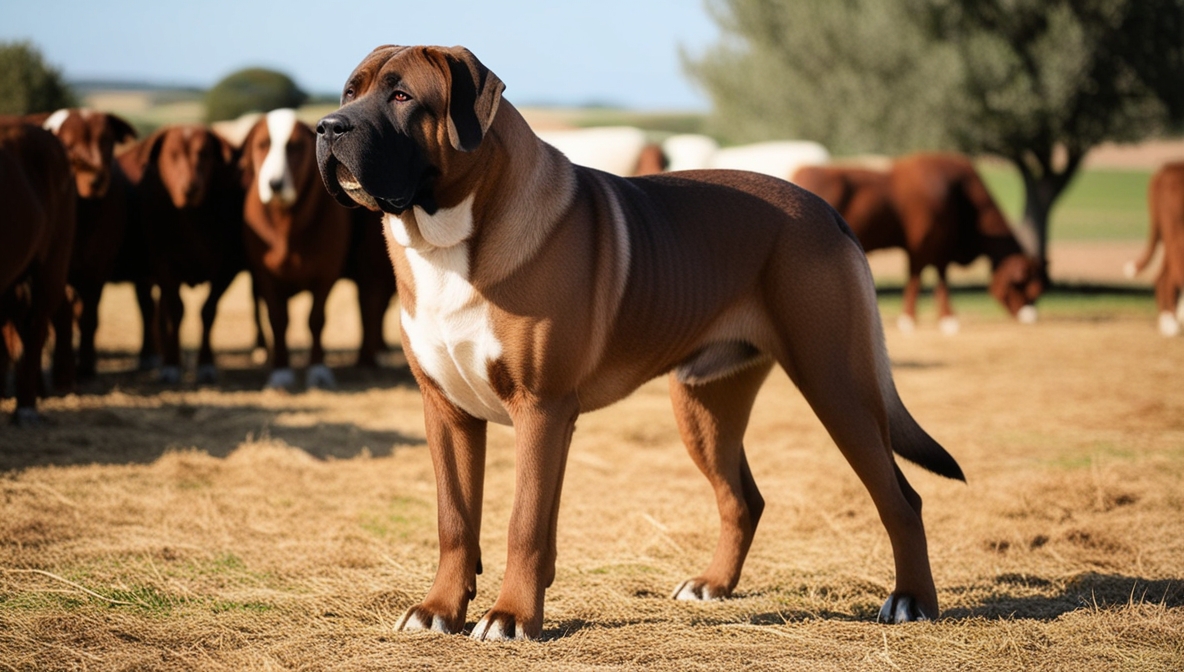
Introduction to the Alentejo Mastiff
The Alentejo Mastiff, also known as the Rafeiro do Alentejo, is a large Portuguese livestock guardian dog breed with centuries of history as a protector of flocks, farms, and rural estates. Originating in the Alentejo region of Portugal, this breed belongs to the Molosser group, which includes other powerful working dogs such as the Spanish Mastiff, Anatolian Shepherd, and Great Pyrenees.
The defining role of the Alentejo Mastiff is that of a guardian and protector. For generations, Portuguese shepherds and farmers relied on this dog to safeguard sheep, cattle, and goats from predators like wolves and intruders. Unlike smaller herding breeds, the Rafeiro is not primarily used for driving livestock but instead for deterring threats through its imposing size, vigilance, and calm confidence.
The breed is recognized for its territorial instincts, protective temperament, and independence. Despite its size and serious nature, the Rafeiro do Alentejo is known to be calm, sober, and even-tempered, making it reliable both in the field and within family environments when raised properly. Its life expectancy of 12–14 years is notably long for such a large breed, reflecting its strong health and natural hardiness.
Today, the Alentejo Mastiff remains a working dog in Portuguese farms and estates, but it has also gained recognition internationally as a guardian breed and loyal companion. Although less common outside Portugal compared to other mastiffs, it is slowly building global interest among enthusiasts who value heritage breeds and functional guardian dogs.
In this guide, we will explore the breed in depth: its history, temperament, health, grooming needs, training challenges, and suitability as a companion or working dog. By the end, you will have a complete understanding of why the Rafeiro do Alentejo is considered one of the most effective and dependable livestock guardians in the world.
Origin and History
The Rafeiro do Alentejo, or Alentejo Mastiff, has deep historical roots that trace back thousands of years on the Iberian Peninsula. This large livestock guardian dog evolved in the Alentejo region of southern Portugal, a vast rural landscape characterized by wide plains, rolling hills, and scattered farms. Its origin is tied to transhumance, the seasonal movement of livestock between summer and winter pastures, where dogs were essential to safeguard herds against wolves, thieves, and other dangers.
Many historians believe that the Rafeiro descends from Molosser-type dogs introduced by the Romans, who used war and guard dogs during their campaigns. Over time, these mastiff-like dogs interbred with local shepherd dogs, resulting in a distinct Portuguese guardian breed adapted to the climate and challenges of the Alentejo.
The breed’s role was clear: to serve as a livestock protector and estate guardian. Unlike herding dogs that guide sheep, the Alentejo Mastiff’s primary duty was to stand watch, patrol boundaries, and deter predators. Its large size, deep bark, and calm but fearless demeanor made it an indispensable companion for Portuguese farmers for centuries.
During the Middle Ages, wealthy landowners also kept the breed as estate guard dogs, further cementing their reputation as a symbol of security, authority, and loyalty. In rural folklore, the Rafeiro was often described as the “silent sentinel of the Alentejo,” embodying both strength and steadiness.
By the 20th century, modernization of agriculture and rural depopulation led to a decline in working Rafeiros. Fortunately, efforts by the Clube Português de Canicultura (the Portuguese Kennel Club) and dedicated breeders preserved the breed. The Portuguese government recognized it as a national treasure, and selective breeding programs stabilized its traits.
Today, the Alentejo Mastiff remains a functional working dog in Portugal, though it is also increasingly appreciated internationally as a guardian and companion breed. Its heritage as a Roman-descended, Portuguese-developed livestock protector makes it one of the oldest and most authentic Molosser dogs still in active use.
Breed Classification and Recognition
The Alentejo Mastiff is classified as a livestock guardian dog (LGD) and belongs to the Molosser family, a group of large, muscular breeds historically used for protection, guarding, and heavy-duty work. Its official Portuguese name, Rafeiro do Alentejo, reflects its regional identity.
The breed is recognized by the Fédération Cynologique Internationale (FCI), the world’s leading canine federation, under Group 2 – Pinscher and Schnauzer, Molossoid and Swiss Mountain and Cattledogs, Section 2.2: Molossoid, Mountain type. This classification places the Rafeiro alongside other mastiff-like guardians such as the Spanish Mastiff, Pyrenean Mastiff, and Tibetan Mastiff.
In Portugal, the Clube Português de Canicultura (CPC) oversees the breed standard, ensuring it preserves its historical traits: a powerful build, calm but alert temperament, and protective instincts. The standard describes the Rafeiro as “serious, sober, vigilant, and loyal,” qualities that make it a dependable farm and estate protector.
Outside of Portugal, the breed remains relatively rare. It is not yet fully recognized by the American Kennel Club (AKC), though it has gained attention within the Foundation Stock Service (FSS), which is a step toward full recognition. In the United Kingdom and parts of Europe, niche guardian dog organizations also acknowledge the breed.
Despite its rarity, the Rafeiro has a strong reputation among enthusiasts of livestock guardian dogs. It is often compared to the Spanish Mastiff, with which it shares geographical proximity, but the Alentejo Mastiff is generally considered leaner, more agile, and slightly more independent.
Recognition efforts aim not just at formal classification but also at preserving genetic diversity. Since the breed is tied closely to its homeland, responsible breeders emphasize maintaining the working traits and natural instincts that define its role as a guardian of flocks and estates.
Ultimately, while the Alentejo Mastiff may not yet enjoy the global fame of the Great Pyrenees or Anatolian Shepherd, its recognition within Portugal and specialized working-dog circles ensures its survival as one of the purest representations of Europe’s ancient Molosser guardians.
Physical Characteristics
The Alentejo Mastiff (Rafeiro do Alentejo) is a giant livestock guardian dog with an imposing presence that reflects its centuries-old role as a protector. Classified as a Molosser-type breed, it combines strength, endurance, and a calm but vigilant expression.
Size and Build:
Males typically stand between 66–74 cm (26–29 inches) at the shoulder and weigh 45–60 kg (100–130 lbs). Females are slightly smaller but still powerful, averaging 64–70 cm (25–28 inches) in height and 35–50 kg (77–110 lbs) in weight. Despite their size, Alentejo Mastiffs are not bulky; instead, they display a balanced, rectangular frame with solid bone structure and muscle mass adapted for long hours of patrolling farmland.
Head and Expression:
The head is broad and strong, with a slightly domed skull and a well-developed muzzle. The nose is typically black, and the lips are slightly pendulous without being exaggerated. The eyes, usually dark brown, convey a serious, sober, and calm expression, which is a signature feature of the breed. Ears are medium-sized, triangular, and drop to the sides, enhancing their watchful appearance.
Coat and Colors:
The Rafeiro has a dense, straight, medium-length coat that provides insulation against the extreme seasonal climates of the Alentejo—hot summers and cold winters. Common coat colors include fawn, yellow, wolf gray, and black, often with white markings on the chest, paws, or muzzle. Some dogs also exhibit brindle patterns.
Tail and Movement:
The tail is long, thick at the base, and usually carried low, though it rises in a gentle curve when the dog is alert. The movement is powerful yet smooth, demonstrating endurance rather than speed. The breed is not built for sprinting but for steady, all-day vigilance.
Overall, the Alentejo Mastiff embodies functional strength, rustic resilience, and natural beauty. Every physical trait serves a purpose: its size deters predators, its coat withstands weather extremes, and its steady gait allows it to cover large rural territories without fatigue.
Temperament and Personality Traits
The Rafeiro do Alentejo is widely admired for its balanced temperament, combining protective instincts with calm composure. Unlike excitable or aggressive breeds, the Alentejo Mastiff is known for being serious, sober, and independent, traits that make it a reliable guardian.
Protective Nature:
The breed is naturally territorial and vigilant, qualities essential for guarding livestock and estates. It will not tolerate intruders, whether human or animal, but it does not act recklessly. Instead, it assesses situations calmly and responds with measured but firm actions. Its deep bark alone is often enough to deter predators.
Calm and Sober Personality:
Despite its size and guarding ability, the Rafeiro is not hyperactive or unnecessarily aggressive. Owners describe it as calm, steady, and patient, making it well-suited for farm life, where quiet confidence is more valuable than constant energy. Indoors, it tends to be reserved and low-energy, often preferring to rest until its presence is required.
Independence and Intelligence:
One of the defining characteristics of the breed is its independence. Unlike breeds bred for obedience or agility, the Alentejo Mastiff makes decisions on its own—a trait inherited from centuries of guarding flocks without human supervision. This means it may not always follow commands instantly, but it demonstrates strong problem-solving instincts.
Family Compatibility:
When raised with proper socialization, the Rafeiro do Alentejo can be a devoted family protector. It is usually gentle and tolerant with children, though its large size requires supervision. With strangers, it remains reserved and cautious until trust is established.
Interaction with Other Animals:
Traditionally, this breed lives alongside livestock such as sheep, goats, and cattle. Its natural instincts allow it to bond with herd animals and treat them as part of its “pack.” With other dogs, it may show dominance, but early socialization helps maintain harmony.
In summary, the Alentejo Mastiff’s temperament blends independence, loyalty, calmness, and protectiveness. It is not a breed for everyone, but for those who appreciate its unique character, it offers an unmatched sense of security and companionship.
Conclusion
The Alentejo Mastiff, or Rafeiro do Alentejo, stands as a living symbol of Portugal’s rural heritage and pastoral traditions. For centuries, it has served as a guardian of livestock and estates, combining an imposing presence with a calm, sober, and protective temperament. Unlike many modern breeds bred primarily for companionship, this dog has retained its working functionality, making it one of the most authentic examples of a livestock guardian dog (LGD) still in use today.
From its Roman Molosser ancestry to its development in the Alentejo region, the breed’s history illustrates its deep connection to human survival and agricultural culture. Every characteristic—its massive frame, deep bark, dense coat, and independent intelligence—was shaped by necessity, ensuring sheep and cattle remained safe from predators and intruders across the harsh landscapes of southern Portugal.
In modern times, the Rafeiro remains relevant, not just for farmers and shepherds but also for individuals seeking a loyal, protective family guardian. However, ownership comes with responsibilities. Its independence, size, and territorial instincts require experienced handlers who understand the nature of guardian breeds. Proper socialization, training, and secure living conditions are essential to bring out the best in this noble dog.
Health-wise, the breed is relatively robust for its size, with a life expectancy of 12–14 years, provided it receives the right care, nutrition, and veterinary attention. While it may not be as internationally famous as the Great Pyrenees or Anatolian Shepherd, it is gaining recognition among enthusiasts who value rare and functional heritage breeds.Ultimately, the Alentejo Mastiff is more than just a dog—it is a protector, partner, and cultural legacy. For those with the right environment and commitment, it offers unmatched loyalty, steady companionship, and dependable protection. Its legacy as the silent sentinel of Portugal’s farmlands ensures that the breed will continue to hold a respected place both in its homeland and among dedicated dog lovers worldwide.
